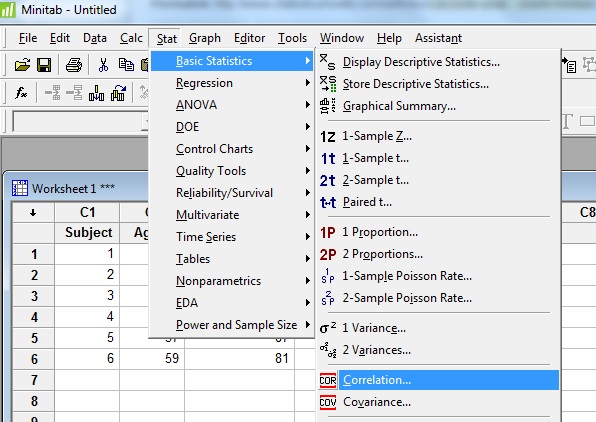

It is subject to probable error which its propounder himself admits, and therefore, it is always advisable to compute it probable error while interpreting its results.In comparison to the other methods, it takes much time to arrive at the results.It is very much likely to be misinterpreted particularly in case of homogeneous data.linear relationship, cause and effect relationship etc. It is based on a large number of assumptions viz.It is very much affected by the values of the extreme items.It is comparatively difficult to calculate as its computation involves intricate algebraic methods of calculations.co-efficient of determination, are made easy.ĭespite the above points of merits, this method also suffers from the following demerits: That is, we have ranked the albums in terms of what was released first (rank 1) and what was released last (rank 8). Roxy is na-tionally known in the area of statistics education, and in 2003 she received the American Statistical Association’s Founder’s Award, recognizing her con-tributions to K12 and undergraduate statistics edu-cation. Determine whether the following Beatles album popularity in terms of sales were related to when they were released. in Applied Statistics from the University of California, Riverside. This method has a lot of algebraic properties for which the calculation of co-efficient of correlation, and a host of other related factors viz. Use Pearson’s formula ( r) to calculate Spearman’s s.This method enables us in estimating the value of a dependent variable with reference to a particular value of an independent variable through regression equations.whether the correlation between the two variables is positive, or negative. Under this method, we can also ascertain the direction of the correlation i.e.

This method not only indicates the presence, or absence of correlation between any two variables but also, determines the exact extent, or degree to which they are correlated.The Pearson correlation is also known as the product moment correlation coefficient (PMCC) or simply correlation. A Pearson correlation is a number between -1 and +1 that indicates to which extent 2 variables are linearly related. The following are the chief points of merit that go in favour of the Karl Pearson’s method of correlation: Pearson Correlations Quick Introduction By Ruben Geert van den Berg under Correlation, Statistics A-Z & Basics. Merits and Demerits of Pearson’s Method of Studying Correlation Merits


 0 kommentar(er)
0 kommentar(er)
